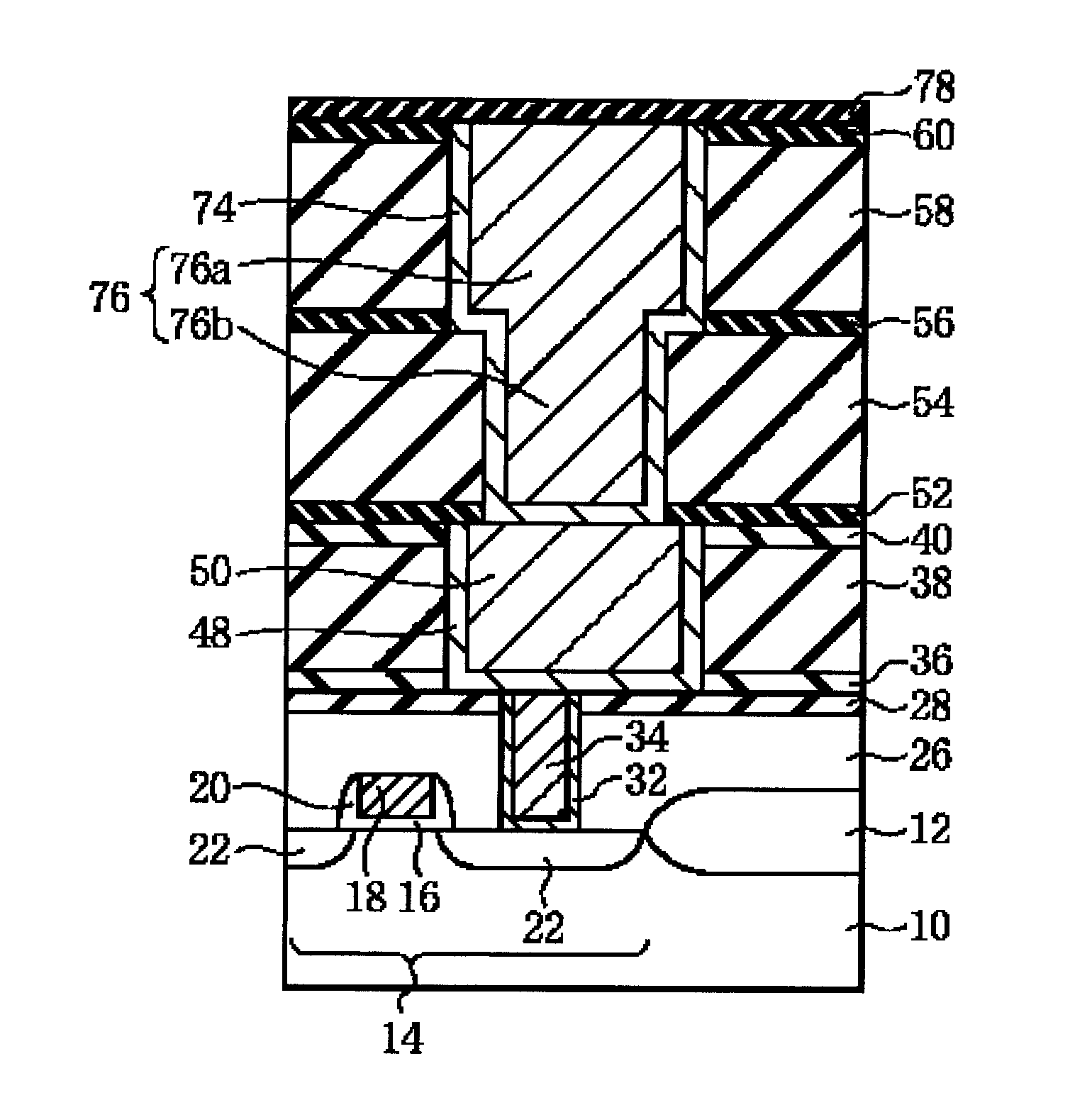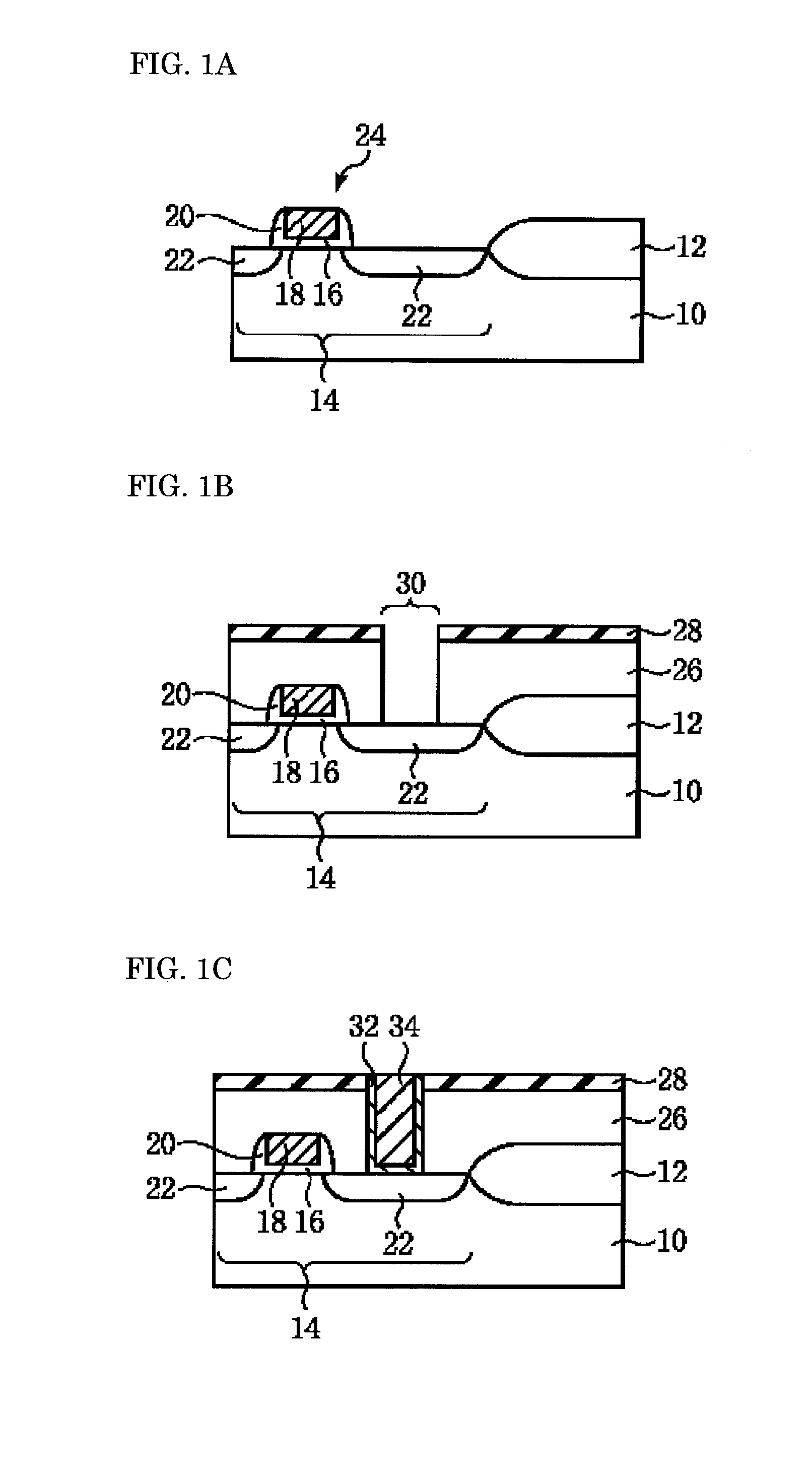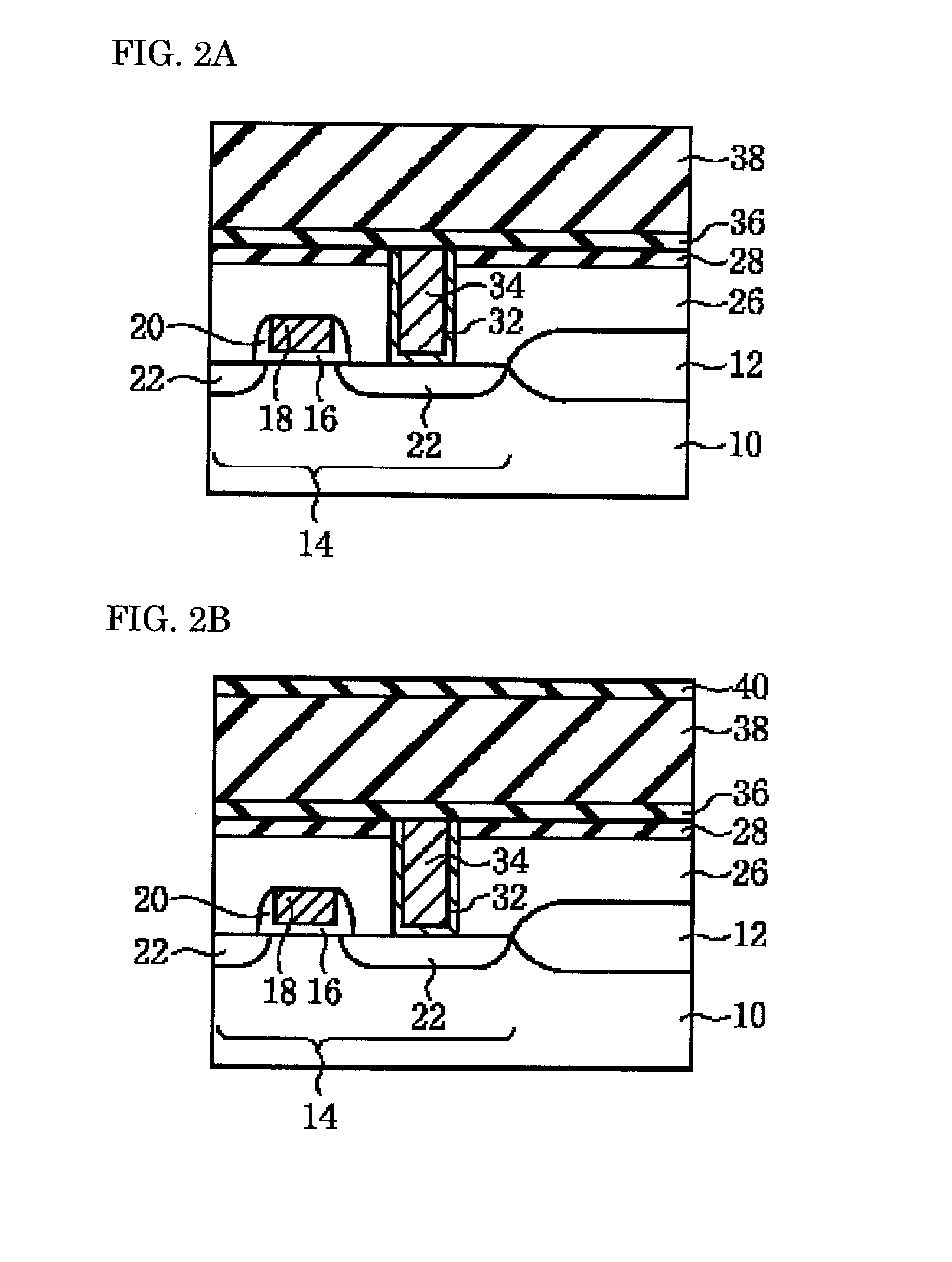Insulating film material, multilayer interconnection structure, method for manufacturing same, and method for manufacturing semiconductor device
- Summary
- Abstract
- Description
- Claims
- Application Information
AI Technical Summary
Benefits of technology
Problems solved by technology
Method used
Image
Examples
example 1
—Preparation of Insulating Film Material—
[0103]A total of 88 g (0.9 mol) of sulfuric acid and 33 g of fuming sulfuric acid (60% SO4) were charged into a reaction container equipped with a nitrogen gas introducing tube and a metering pump for liquids, 87 g (0.95 mol) of toluene was dropwise added under a condition of 2 mL / min with the metering pump, and a maturing reaction was conducted for 1 h after completion of addition.
[0104]Then, a starting material solution obtained by diluting 103 g (0.45 mol) of 1,1,3,3-tetrachloro-1,3-disilabutane to 20% by mass with toluene was dropwise added under a condition of 2 mL / min with the metering pump, and a maturing reaction was conducted for 2 h after completion of addition.
[0105]Upon completion of the reaction, 100 mL of a 50% by mass aqueous solution of sulfuric acid was added, the precipitated toluenesulfonic acid was filtered, and the excessive aqueous sulfuric acid was removed with a separating funnel.
[0106]Sulfuric acid remaining in the so...
example 2
—Preparation of Insulating Film Material—
[0111]A total of 88 g (0.9 mol) of sulfuric acid and 33 g of fuming sulfuric acid (60% SO4) were charged into a reaction container equipped with a nitrogen gas introducing tube and a metering pump for liquids, 87 g (0.95 mol) of toluene was dropwise added under a condition of 2 mL / min with the metering pump, and a maturing reaction was conducted for 1 h after completion of dropping.
[0112]Then, a starting material solution obtained by diluting 115 g (0.45 mol) of bis(methyldichlorosilyl)ethane to 20% by mass with toluene was dropwise added under a condition of 2 mL / min with the metering pump, and a maturing reaction was conducted for 2 h after completion of addition.
[0113]Upon completion of the reaction, 100 mL of a 50% by mass aqueous solution of sulfuric acid was added, the precipitated toluenesulfonic acid was filtered, and the excessive aqueous sulfuric acid was removed with a separating funnel.
[0114]Sulfuric acid remaining in the solution...
example 3
—Preparation of Insulating Film Material—
[0118]A total of 88 g (0.9 mol) of sulfuric acid and 33 g of fuming sulfuric acid (60% SO4) were charged into a reaction container equipped with a nitrogen gas introducing tube and a metering pump for liquids, 87 g (0.95 mol) of toluene was dropwise added under a condition of 2 mL / min with the metering pump, and a maturing reaction was conducted for 1 h after completion of dropping.
[0119]Then, a starting material solution obtained by diluting 128 g (0.45 mol) of bis(methyldichlorosilyl)butane to 20% by mass with is toluene was dropwise added under a condition of 2 mL / min with the metering pump, and a maturing reaction was conducted for 2 h after completion of dropping.
[0120]Upon completion of the reaction, 100 mL of a 50% by mass aqueous solution of sulfuric acid was added, the precipitated toluenesulfonic acid was filtered, and the excessive aqueous sulfuric acid was removed with a separating funnel.
[0121]Sulfuric acid remaining in the solut...
PUM
| Property | Measurement | Unit |
|---|---|---|
| Thickness | aaaaa | aaaaa |
| Thickness | aaaaa | aaaaa |
| Porosity | aaaaa | aaaaa |
Abstract
Description
Claims
Application Information
 Login to View More
Login to View More - R&D Engineer
- R&D Manager
- IP Professional
- Industry Leading Data Capabilities
- Powerful AI technology
- Patent DNA Extraction
Browse by: Latest US Patents, China's latest patents, Technical Efficacy Thesaurus, Application Domain, Technology Topic, Popular Technical Reports.
© 2024 PatSnap. All rights reserved.Legal|Privacy policy|Modern Slavery Act Transparency Statement|Sitemap|About US| Contact US: help@patsnap.com










